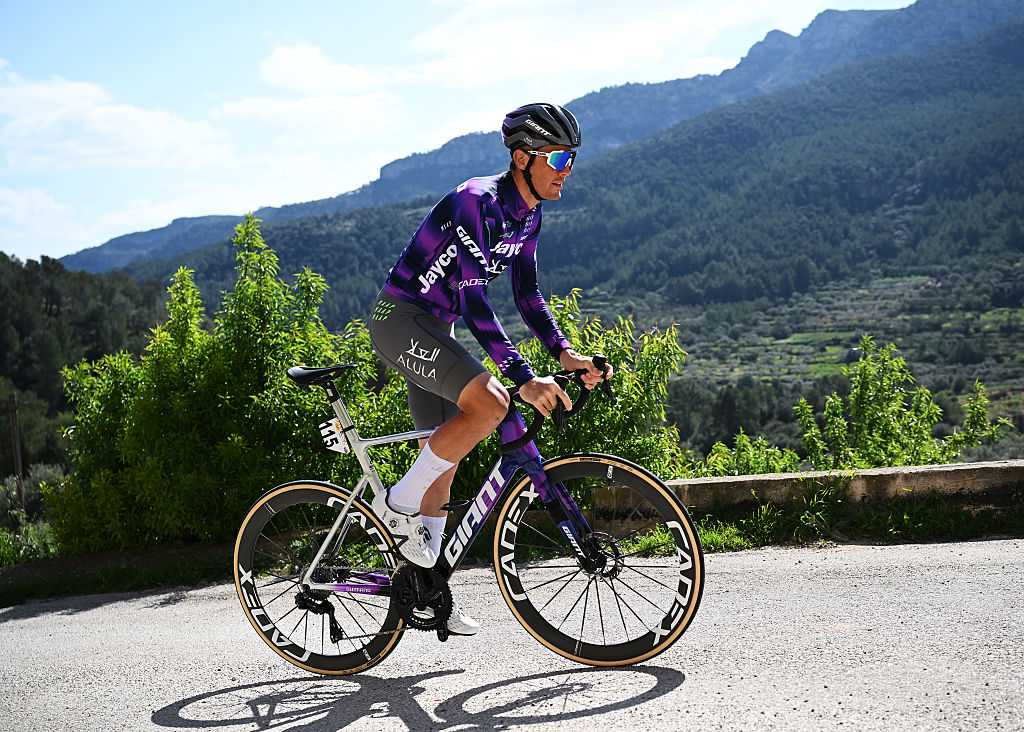Road cycling's biggest tech flops: Innovative ideas that didn't quite work
There are good ideas and then there are not-so-good ones. Here’s our pick of the latter

The road to bicycle hell is paved with good inventions, as well as plenty of bad ones. Ever since the Safety Bicycle did for the penny-farthing, people have been inventing tech to try and make the bicycle better. We're pretty much there with the bicycle design-wise and have been for some time. As such there's a decent amount of wiggle room for trying new things
It's at times hard to differentiate between tech that has been simply superseded by newer and better kit as technology has improved and time has moved on, and things that have genuinely flopped. We've put our heads together and tried to think of ideas that just haven't worked out over the years.
Certain bits of tech are often singled out and branded flops in the road world. However, if something is still coveted by collectors, regarded as beautiful decades on or was ridden to victory we think it gets a pass. No, Campagnolo Delta brakes are said to have not stopped particularly well, but If something has the power to make grown men and women go misty-eyed all these years on, and part with healthy lumps of cash to own, it can't be considered a true flop, can it?
Here’s our pick of the bike tech that has fallen by the wayside in the march towards road bike perfection. This isn't us mocking ideas - full respect to the engineers over the years who have tried to improve the bikes we ride.
Chainstay mounted rim brakes

There was a period before almost all modern road bikes swapped to disc brakes, where several manufacturers mounted the rear rim brake of bikes on the chainstays just behind the bottom bracket shell. Their positioning kept them out of the airflow better than the more standard seat stay position, for better aerodynamics, and the bikes looked cleaner and more futuristic. Nearly all were direct mount system variants that offered slightly improved tyre clearance in the transitional period where we were heading for far wider tyres and rims.
The problem was that in use, a lot of these brakes didn't work particularly well. Their location meant that they got sprayed with a lot more water and muck whenever it rained which can affect performance.
Cable routing was also tight and it was difficult on some bikes to achieve an acceptable, smooth brake feel at the lever. The look of lots of direct mount-type models also put riders off adjusting them themselves and the lack of maintenance only made things worse.
The latest race content, interviews, features, reviews and expert buying guides, direct to your inbox!
They made bikes look cleaner and more aero at the time, but regular, seat stay-mounted calipers worked better, and what's more important than stopping safely?
The Aqua Blue Road 1x Setup

Professional road team Aqua Blue Sport raced on 3T Strada bikes in the late 2010s that were equipped with Sram 1x drivetrains. It's safe to say, though we didn't test the bikes ourselves that the gearing setup wasn't particularly well received by the majority of the team's riders.
1x, or the use of a single front chainring, certainly isn't dead, and 1X setups have been used in the pro peloton for high-speed time trials, hilly time trials and even flatter road stages. You could even argue Aqua Blue were slightly ahead of the curve, but the tech just wasn't quite ready.
The issue at the time was that there wasn't the gearing available to accommodate road racing on all terrains, from flat, rolling roads and high mountains. The Aqua Blue setup was covered quite closely by the cycling media at the time and we believe the team rode mostly with 44 tooth chainrings and 11-32T or 9-36T cassettes. This combination left riders wanting in certain terrain and just didn't provide the gearing range of something like a regular 11-28 / 39-53 tooth set-up a lot of racers would have used at the time (or similar).
Several of the team's riders were openly critical of the tech and it's probably safe to say it was something of a flop at the time.
The Monolink saddle design

Selle Italia released a saddle and seatpost standard over a decade ago now called the Monolink. The system did away with a traditional pair of saddle rails and instead used a large single-rail system to attach the saddle to the seatpost.
The saddle setup needed a specific seatpost clamp arrangement and, ideally, manufacturers to adopt the standard to widen the range of choices for people. The system was said to provide an increased range of saddle rail adjustments for people and in some cases a narrower saddle.
Plenty of the best road bikes used the system, for a time, but it never really took off and failed to gain a strong foothold. The brand no longer offers Monolink tech saddles on its website resigning the project to history. However, some off-road brands still manufacture saddles with a single rail design.
Vittoria Revo KXS reversible tyres

Cyclingnews covered the Vittoria Revo KXS reversible tyres back in 2004 and we believe the tyres were around for a few years. The idea behind the tyre was that one side of the tread was for dry conditions and one was for wet.
The tyres were only available in a 23mm option at the time and weighed a claimed 275 grams. Vittoria claimed the dual treads offered improved puncture protection in their own right.
In theory, the idea makes sense and sounds like a money saver. Just swap your tyres around depending on the conditions and your riding requirements.
In reality, the tyres never really gained much traction (pun intended) though and there's probably a reason we don't see reversible performance road tyres today. The arrival of tubeless tyres and technology would also create issues here now and swapping tyres around in the garage would be very messy.
Scott Drop In handlebars

Greg Lemond was famed for being tech-focused and meticulous about his bike setups. He was the first rider to win at the Tour de France using tri bars.
Lemond also rode with the controversial, and downright odd-looking Scott Drop-In Bars which featured an additional section of horizontal handlebar attached to the bottom of each handlebar drop. The design was aimed at providing additional, aerodynamic hand positions.
We are sure Lemond used these handlebars to go very fast, far faster than most of us have ever ridden, but the design didn't look aesthetically pleasing and it didn't catch on, and has never resurfaced.
It seems that handlebar controversy is nothing new in cycling. We are sure the cycling media was awash with drop-in bar headlines in the same way turned-in brake levers and hyper-narrow handlebar chat has featured in headlines over the last few years. Perhaps a decade from now, there will be a fresh handlebar scandal to pore over.

Tom joined the Cyclingnews team in late 2022 as a tech writer. Despite having a degree in English Literature he has spent his entire working life in the cycling industry in one form or another. He has over 10 years of experience as a qualified mechanic, with the last five years before joining Cyclingnews being spent running an independent workshop. This means he is just as happy tinkering away in the garage as he is out on the road bike, and he isn’t afraid to pull a bike apart or get hands-on with it when testing to really see what it’s made of.
He has ridden and raced bikes from an early age up to a national level on the road and track, and has ridden and competed in most disciplines. He has a keen eye for pro-team tech and enjoys spotting new or interesting components in the wild. During his time at Cyclingnews, Tom has already interviewed some of the sport's biggest names including Mathieu van der Poel, Tadej Pogačar and Alberto Contador. He's also covered various launches from brands such as Pinarello, Ridley, Specialized and more, tackled the Roubaix Challenge sportive aboard his own rim-brake Cannondale SuperSix Evo, tested over 20 aero helmets in the wind tunnel, and has created helpful in-depth buying advice relating to countless categories from torque wrenches to winter clothing.
